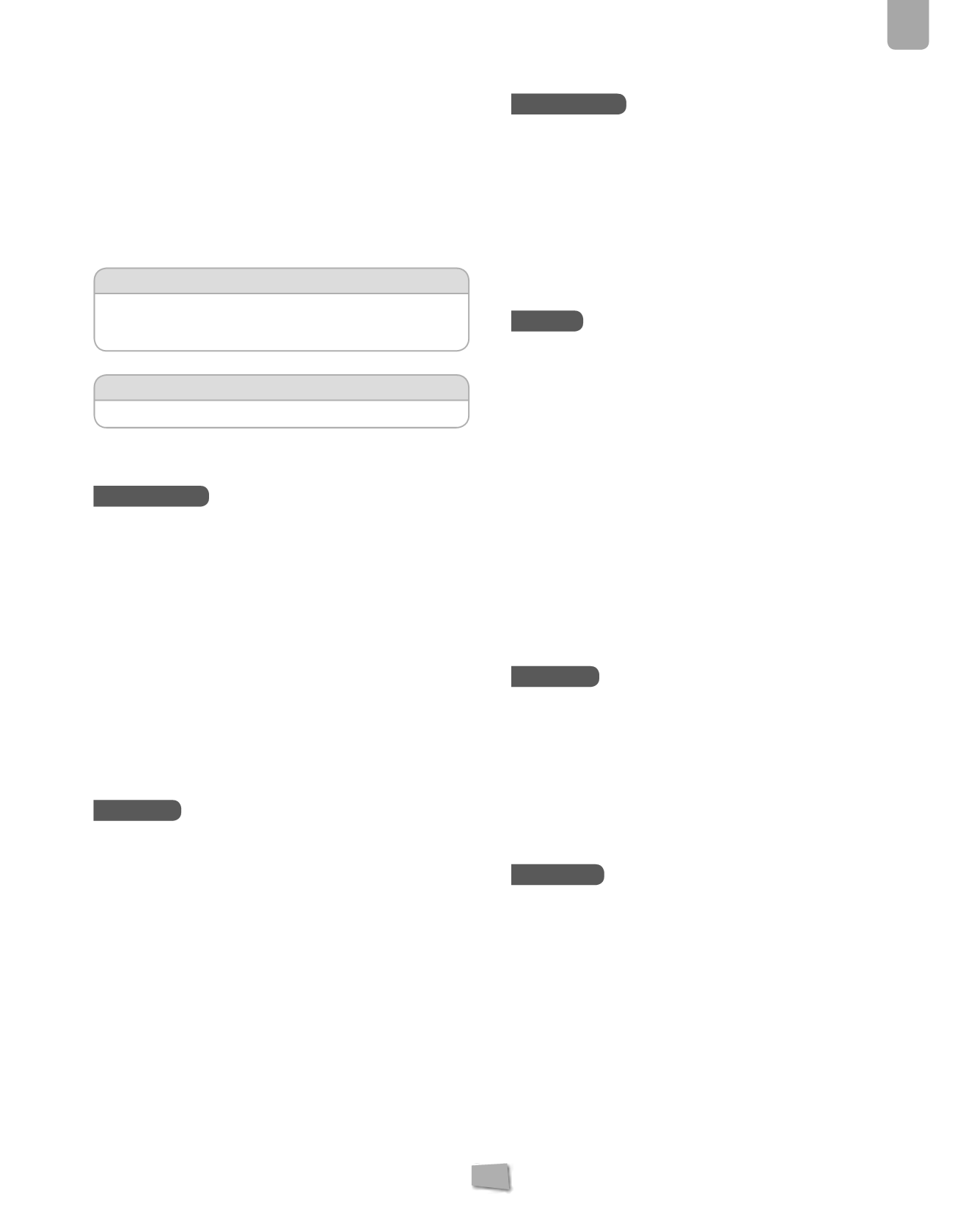
115
5
Structures
between beams and columns. Triangular structures are very
easy to build with strips of paper, ice-cream sticks, toothpicks
etc. The process of forming triangles in the structure is called
‘triangulation’.
As regards the rigidity of very long parts subjected to
compression, we can expand the explanation by referring to
the buckling that occurs if these parts are too thin. Furthermore
we can relate this to the fact that the shape of a part can help
to counteract this effect in structures.
Animation:
STRUCTURAL CONDITIONS
An animation which explains the conditions which a structure
must meet in order to be stable, resistant to the tensions which it
experiences, and rigid or able to control its deformation.
Reinforcement activities:
STRUCTURAL CONDITIONS
Activities to reinforce learning about structural conditions.
Answer key
Understand
25.
Look at the pictures. Which structure do you think is
more stable? Which one is less stable? Why?
The pyramid is the most stable shape because of its large base
and because most of its mass is near the ground and centred.
Its centre of gravity (COG) is located at a third of its height.
The inverted trapezium has its COG in the centre but its mass
is concentrated in its upper part which is unsafe (the height
of the trapezium’s COG is
h x (2a + b) / 3 (a + b)
. Finally, the
third structure in the middle is not stable because its COG falls
outside its base and it will fall over.
26.
Which of the structures is the oldest one in history?
Why?
The pyramid was used before the others as a structure because
of its stability and the ease with which it could be adapted to
the material which was used in the past, i.e. stone.
Analyse
27.
Look at the photo. Where is the tower’s centre of
gravity? Give reasons for your answer.
The tower’s centre of gravity is between the antenna and the
rear part, in the centre of the base to make it stable.
Understand
28.
Why is buckling dangerous in a structure?
Because it adds bending stress to the elements which are
designed to withstand compression, making it easier to
break them. Furthermore, when buckling occurs, it is a self-
perpetuating process.
29.
Look at the cables that cross each other in the photo.
What do you think they contribute to the structure?
They provide rigidity because they cannot become laterally
deformed.
Apply
30.
Imagine a structure made from four ice-cream sticks
joined with paper fasteners or screws:
a)
What would happen if you pressed on two of the
corners?
a) It will become deformed.
b)
If we reinforce the square structure with a diagonal
stick, would it still be possible to deform it by pressing
on those two opposite corners?
b) In this case, the triangular bar prevents a change of shape
in any direction when resisting compression as much as when
resisting traction.
c)
Could we reinforce the structure with thread or
wire? How many pieces would be necessary?
c) To make the square structure rigid using thread or wire, one
or the other must be placed in the two diagonals since the
thread or wire only bears traction stress.
Analyse
31.
Look at the photo of the model bridge. How does it
solve the problems of stability, resistance and rigidity?
Stability has been achieved by means of the symmetry,
the centred position of the pillars (part of the bridge that
projects on both sides) and the enlargement of the base in
the foundations. Resistance is provided by the thickness of
the deck and the suspender cables. And rigidity is achieved
by means of the shape and the fixed joints (in some cases
involving the overlapping of parts).
Evaluate
32.
Now that you have studied all the different aspects of
a structure, check your design for your bridge. Draw a
sketch on a scale of 1:2 or 1:3 of your model.
Student’s own answer. It is part of the task portfolio.


